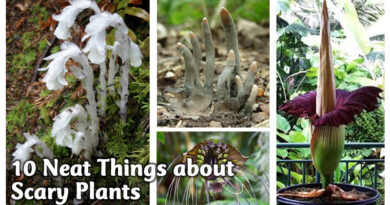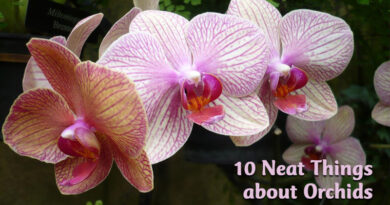The Grasses
Grasses are very popular in today’s gardens, partly because of their structural beauty and the fact that they require very little care. Less well known but making an appearance to great effect are the sedges and reeds. They too take little care and can sometimes solve problems in wet and shady areas.
Sedges (Carex)
Sedges are of a genus known as Carex. Flowers are small and arranged in spikes. Many varieties enjoy wet conditions, although some are drought tolerant. You often see them growing wild in ditches. They will grow in shade, making them very useful in the garden.
Sedges tend to have a wispy growing habit, sending out graceful sprays of leaves growing from a clump. Some are stoloniferous so be prepared to keep them in check as they begin to spread underground.

Carex dipsacea or autumn sedge turns a lovely reddish orange in fall. It likes moist soil, full sun to light shade and grows 12 to 18 inches tall. Hardy only to zone 5.
Carex aurea, golden sedge, likes it wet and is useful around ponds. It is a pretty, fine-textured plant with medium green foliage and round yellow seed heads. Full sun to light shade and happy in zone 3 and even lower.
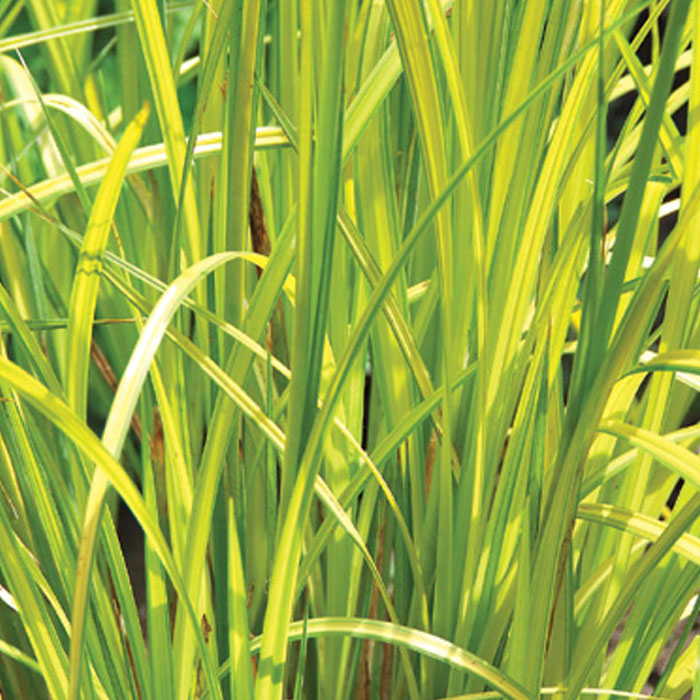
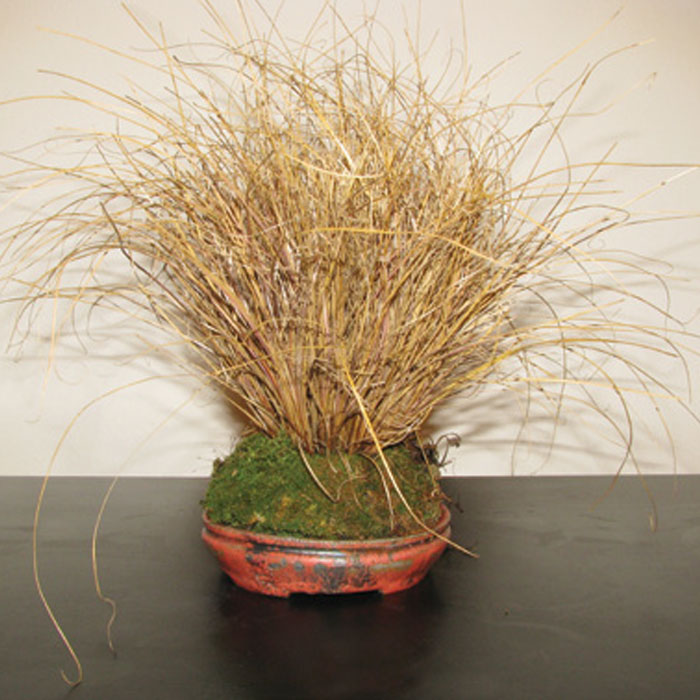
Carex morrowi variegata ‘Ice Dance’ may be the answer to your shade woes. Clump forming, it is happy in part to full shade, although it likes fairly wet conditions, where it will spread moderately. It tolerates nibbling by deer. Mulch in zones lower than 5. Leaves have lovely white margins. It makes a good ground cover in a shady area.
Carex glauca, blue sedge, has steel blue foliage in a mounded form. Grows eight inches tall with a 12-inch spread and will live up to 10 years. Great in shade and in average to wet conditions. Zone 4, but has been successful in zone 3.

Reeds (Juncus)
Reeds or rushes have thin round stems, sometimes flattened, but that are usually solid and are sometime filled with spongy pith. Leaves arise in a fan shape from the base of the plant and clusters of small flowers emerge near the end of the stem. They grow upright in tussocks with an upright vase shape.
Horsetail is a primitive plant that is very useful in both wet and dry gardens. It occurs naturally around the margins of waterways. It is deep green with jointed stems that give it an exotic look.
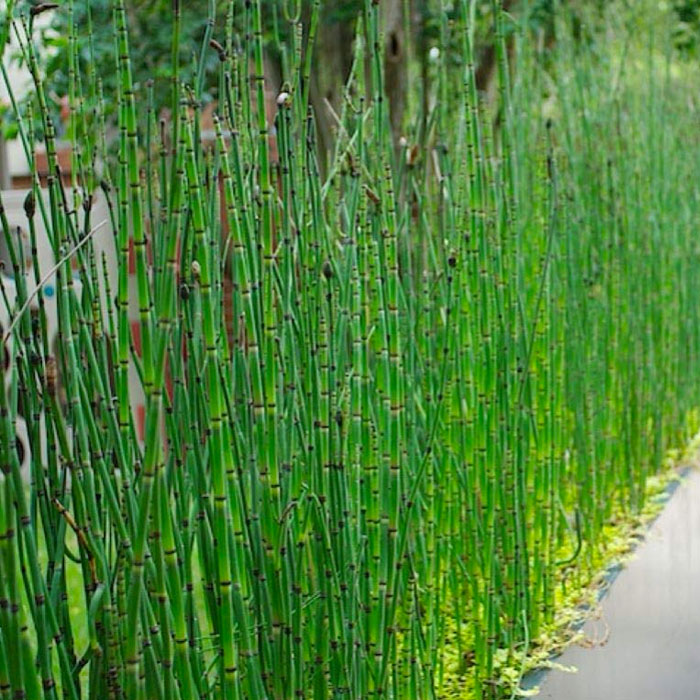
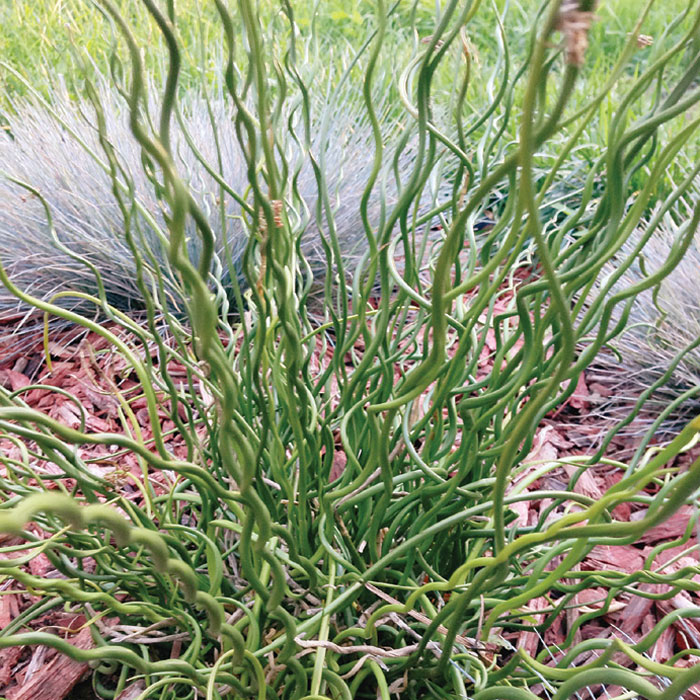
Corkscrew rush (Juncus effuses ‘Spiralis’) is making its way into garden centres, prized for its original, twisty stems. Sun or part shade with acidic soil.
Juncus ‘Blue Arrows’. Blue green foliage grows 1.5 feet to three feet in moist to wet soil in sun. Its spikey, stiff leaves offer interesting texture to the garden or to containers.
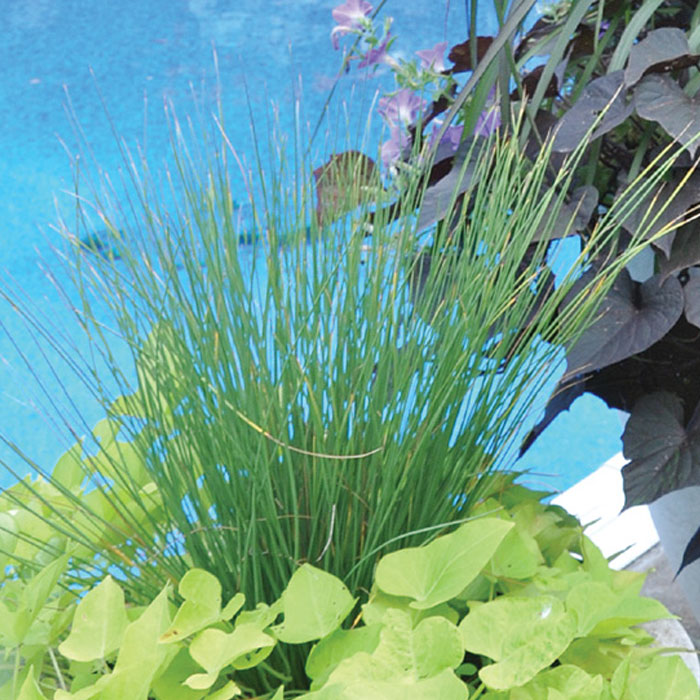
Japanese fountain grass
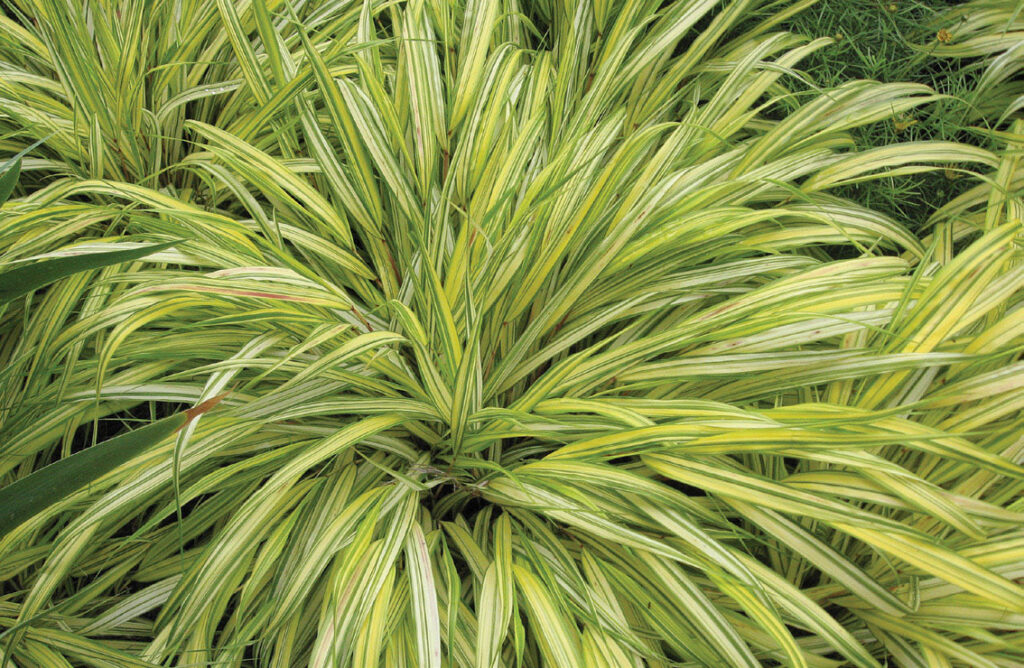
Japanese forest grass (Hakonechloa macra) is a stunning grass plant, a member of the true grass, Poacaea family. We are seeing more and more of this lovely and colourful plant, where it is often used as an accent plant for its colour and graceful form. It likes shade, spreads slowly and the stalks cascade like water from a fountain in the most appealing manner. The thin papery leaves rustle in the breeze and midsummer flowers emerge from the ends of its stalks, starting out pale purple then ripening to tan.
Hakonechloa macra ‘Aureola’ is popular with its golden striped, peagreen foliage that glows predominately gold, becoming pinkish in fall. It was the 2009 Perennial Plant of the Year and won a Royal Horticultural Society Award of Garden Merit.
Hakonechloa macra ‘Sunny Delight’ is the opposite of ‘Aureola’ with gold stripes on a green background starting from the base and moving upward. Darker than ‘Aureola’.
Hakonechloa macra ‘All Gold’ has no variegation but its yellow to chartreuse leaves needs part sun to sustain its best colour.
Hakonechloa macra ‘Beni-Kaze’ is a cool green but it flushes red to purple in autumn.


